Home > Company > Tire Safety > Choosing Tires > Determining Tire Size
Once you have determined it’s time to buy tires, you’ll need to know what size tires are correct for your vehicle. Depending on what you drive, you may be interested in how to find the right tire for your…
This information is usually inside your car’s doorjamb, in your owner’s manual. To ensure your current tire or a replacement tire you may be looking at matches your vehicle’s requirements, it will be good for you to understand how tire sizing works. You may have never paid attention to the string of numbers and letters on every tire, but it’s a gold mine of information.
If you’re unsure of how to read tire measurements from your tire walls, the information and graphics below will tell you how to read tire size, understand and interpret it. If you decide you want to substitute a new size or tire type, consult an authorized tire retailer who can expertly advise you, because many optional tire sizes may have different load capacities and could require wheels of a different rim width or diameter and different inflation pressure.
Not sure you need new tires? Our Tire Replacement Guidance article will help you determine whether it’s time to retire your tires.
Most passenger cars, SUVs and light pickups (1/2 ton and smaller) will come with tires that are either P-Metric or Euro-Metric. For P-Metric tires, you’ll see the letter “P” before the number sequence begins: P225/70R16 97H. P-metric is a designation standardized by the Tire and Rim Association for a “passenger car” tire type. For Euro-Metric there will be no preceding letter before the number sequence begins: 225/70R16 98H. Euro-Metric is a designation standardized by the European Tyre and Rim Technical Organization for a “passenger car” tire type.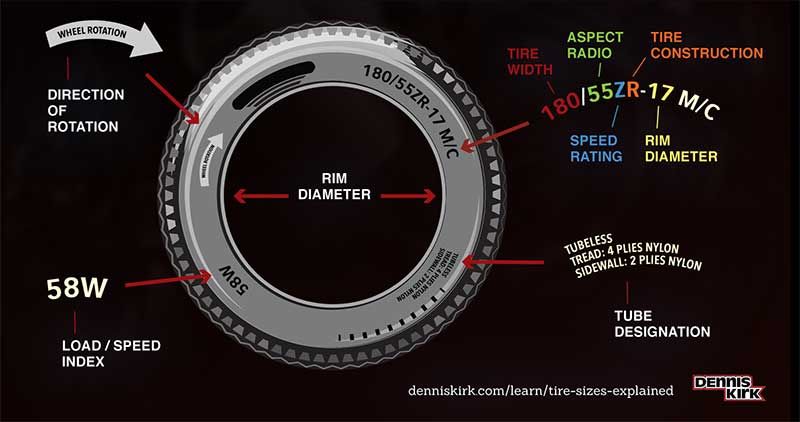 Both P-Metric and Euro-Metric size tires are designed to primarily be used on passenger vehicles, which can include cars, minivans, SUVs, and other light duty pickup trucks.
Both P-Metric and Euro-Metric size tires are designed to primarily be used on passenger vehicles, which can include cars, minivans, SUVs, and other light duty pickup trucks.
If your vehicle is an SUV, Pickup truck or van, you might see a different type of size designation on your placard that is specific for heavy duty light trucks and vans, especially common on ¾ ton and larger pickup trucks and vans. There are two common size types in this category, LT-Metric and Euro-Metric Commercial (aka C-type). Both size types are metric and so use the same structure as P-Metric and Euro-Metric but have some different characters in the size that differentiate them from their passenger car cousins. LT-Metric tires will have the letters “LT” before the size number sequence: LT245/75R17 119/116R Load Range E. Notice that there are two load index numbers and a Load Range, see the section on Load Index for more info. LT-Metric is a designation standardized by the Tire and Rim Association for a “light truck” type tire. Euro-Metric Commercial or C-Type tires will look very similar to a passenger Euro-Metric size except that there will be a “C” right after the rim size: 23/65R16C 121/119R. Notice that the C-type tires also have two load index numbers. Euro-Metric Commercial, or C-Type is a designation standardized by the European Tyre and Rim Technical Organization for a light truck type tire. Light truck tires are designed to be used on vehicles capable of carrying heavy cargo and are usually only specified by a vehicle manufacturer on vehicles exceeding a certain load capacity.
Euro-Metric Commercial or C-Type tires will look very similar to a passenger Euro-Metric size except that there will be a “C” right after the rim size: 23/65R16C 121/119R. Notice that the C-type tires also have two load index numbers. Euro-Metric Commercial, or C-Type is a designation standardized by the European Tyre and Rim Technical Organization for a light truck type tire. Light truck tires are designed to be used on vehicles capable of carrying heavy cargo and are usually only specified by a vehicle manufacturer on vehicles exceeding a certain load capacity.
Other types of tires that fall into the Metric sizing type are Temporary Spares, they start with “T”. If you see a size that starts with “ST,” that means “special trailer” and is only for use on a trailer.
Regardless of whether you are looking at a P-Metric, Euro-Metric, LT-Metric, Euro-Metric Commercial, T or ST tire the numbers in the size mean the same thing.
The first number to appear in your tire size information is the width, in millimeters, of the correct tires for your vehicle: P225/70R16 91S.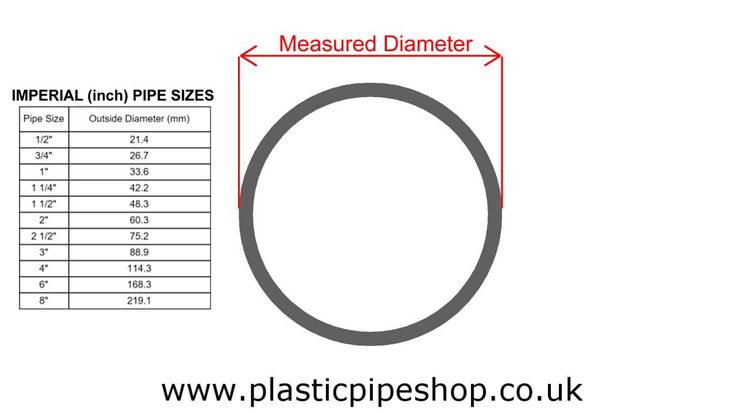
Tire width always refers to the measurement from one sidewall to another. Thus, a tire with the measurement “P225” is for a passenger vehicle and has a nominal width of 225 millimeters.
After the slash mark, the next number you see is for the tire’s aspect ratio, which essentially tells you how tall your tire’s profile is: P225/70R16 91S. Aspect ratios are delivered in percentages. Tire makers calculate the aspect ratio by dividing a tire’s height off the rim by its width. If a tire has an aspect ratio of 70, it means the tire’s height is 70% of its width.
Lower aspect ratio tires, such as a 60 series, generally offer vehicle handling performance advantages over higher aspect ratio tires, such as a 75 series, but a typical trade off can be ride harshness.
After the aspect ratio comes a letter that indicates the type of internal construction maintaining your tire’s stability: P225/70R16 91S.
There are two types of construction that you may see on the sidewall of a tire:
Radial tires are the most common tires on the road in the United States today; thus “R” will usually be shown in the tire size designation. Radial construction means the tire’s internal ply cords are oriented in a radial direction, from one bead over to the other, essentially perpendicular to the direction of rotation. You may also occasionally see RF indicating a run flat tire or ZR indicating a tire that is a speed rating higher than V.
The next number is the diameter code, in inches, of the rim onto which the tire can be mounted. For example, a tire with the P225/70R16 91S would fit a rim with a 16-inch diameter.
Load index can be a confusing subject because there are so many different caveats, but we will try to explain everything here.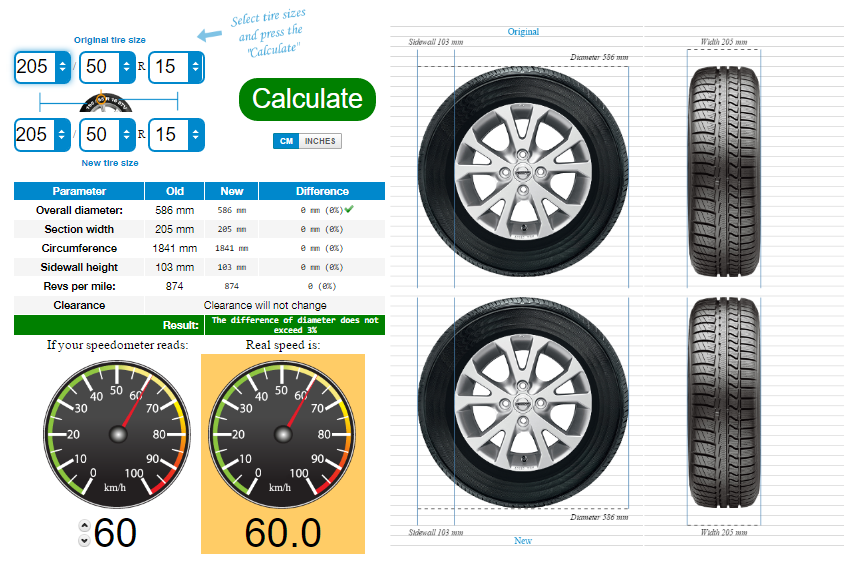
The next figure after the rim size in the sequence is your tire’s load index, which tells us how much weight, in pounds, the tire can support when fully inflated: P225/70R16 91S
We call it the load “index” because the number doesn’t tell us the precise number of pounds the tire can carry, at least not by itself. However, the number does correspond to a specific load capacity listed in an index. Beginning with 1 and ending with 150, numbers in the load index represent carrying capacities of 99 to 7385 lbs.
There are two types of load types for passenger tires though, Standard Load and Extra Load. If a tire is Standard Load there will be no markings indicating it but if it is Extra Load the letters XL will appear after the size and load index.
Standard Load Euro-Metric: 215/55R17 94V
Extra Load Euro-Metric: 215/55R17 98V XL
Passenger car tires like P-Metric and Euro-Metric will only have one load index number where LT-Metric and Euro-Metric Commercial (C-Type) will have two numbers separated by a slash.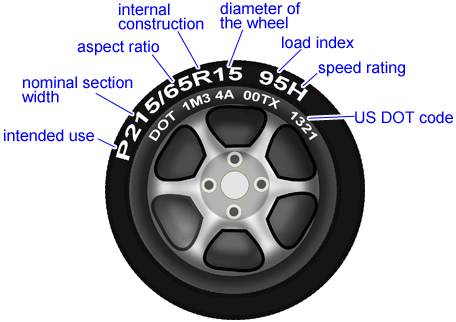 The first number is the load index if the tire is used in a single application, the second number is the load index if the tire is used in a dual application. Passenger type tires cannot be used in a dual application. Light truck tires will also have a Load Range that is indicated by a letter, such as Load Range E. Load Range is an older term that is still commonly used in the industry so you may hear your tire dealer reference it but the load index numbers are the best way to ensure you have the proper tire.
The first number is the load index if the tire is used in a single application, the second number is the load index if the tire is used in a dual application. Passenger type tires cannot be used in a dual application. Light truck tires will also have a Load Range that is indicated by a letter, such as Load Range E. Load Range is an older term that is still commonly used in the industry so you may hear your tire dealer reference it but the load index numbers are the best way to ensure you have the proper tire.
One important but often misunderstood facet about load index is that the load index numbers between standards organizations (P-Metric vs Euro-Metric) are not necessarily on the same scale. Meaning that two tires in the two different systems that have the same load index number could have different maximum load capacities. This is why it’s important to not only look at the load index number but also verify the actual load capacity.
The final figure in a tire size sequence is the speed rating, which is indicated by a letter: P225/70R16 91S.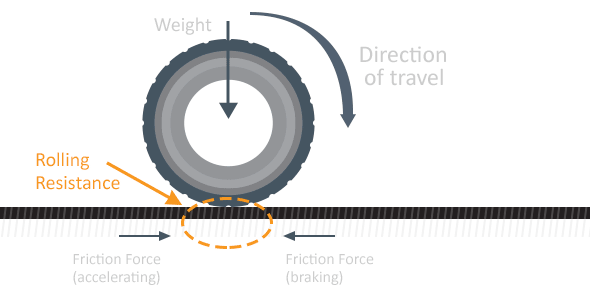 Just as your load index number corresponds to a specific load, your speed rating letter corresponds to a particular speed capability based on a standardized laboratory test.
Just as your load index number corresponds to a specific load, your speed rating letter corresponds to a particular speed capability based on a standardized laboratory test.
For example, a tire with speed rating “S” is rated for up to 112 mph, while a tire rated “R” is up to 106 mph. Remember that this isn’t a recommended cruising speed. Of course, you should always follow legal speed limits on roadways.
Replacement tires must have the same or higher speed rating as the vehicle’s Original Equipment to maintain vehicle speed capability. If a vehicle has tires with different speed ratings, it is the speed rating of the “slowest” tire that dictates the vehicle top speed.
There is one last sizing type that you should know about, especially if you are in the market for off road tires for a light truck or SUV. It’s called a Flotation size and the numbers in this sizing format are very different from the Metric formats. Flotation sized tires are similar to LT-Metric tires in application except for a few important points. Number one, they cannot be used in dual applications and number two, an equivalent size tire may have different load capacity than its LT-Metric counterpart.
Flotation sized tires are similar to LT-Metric tires in application except for a few important points. Number one, they cannot be used in dual applications and number two, an equivalent size tire may have different load capacity than its LT-Metric counterpart.
The first number in the Flotation tire size is the overall diameter in inches. Pretty straight forward.
The second number is the section width (sidewall to sidewall) measurement in inches. Again, fairly simple.
After the section width comes a letter that indicates the type of internal construction: 33X12.50R17LT 120Q.
This is the same as is found in the metric sizing systems.
There are two types of construction that you may see on the sidewall of a tire:
Radial tires are the most common tires on the road in the United States today; thus “R” will usually be shown in the tire size designation. Radial construction means the tire’s internal ply cords are oriented in a radial direction, from one bead over to the other, essentially perpendicular to the direction of rotation.
Radial construction means the tire’s internal ply cords are oriented in a radial direction, from one bead over to the other, essentially perpendicular to the direction of rotation.
The next number is the diameter code, in inches, of the rim onto which the tire can be mounted. For example, a tire with the 33X12.50R17LT 120Q would fit a rim with a 17-inch diameter.
The letters LT will be after the Rim Diameter indicating that this tire type is intended for Light Truck vehicles similar to the LT-Metric and Euro-Metric Commercial (C-Type) tires.
Load Index and Speed Rating have the same meaning and format as the tires using the metric sizing system. Note that since flotation tires cannot be used in a dual application there will be only one load index number instead of two.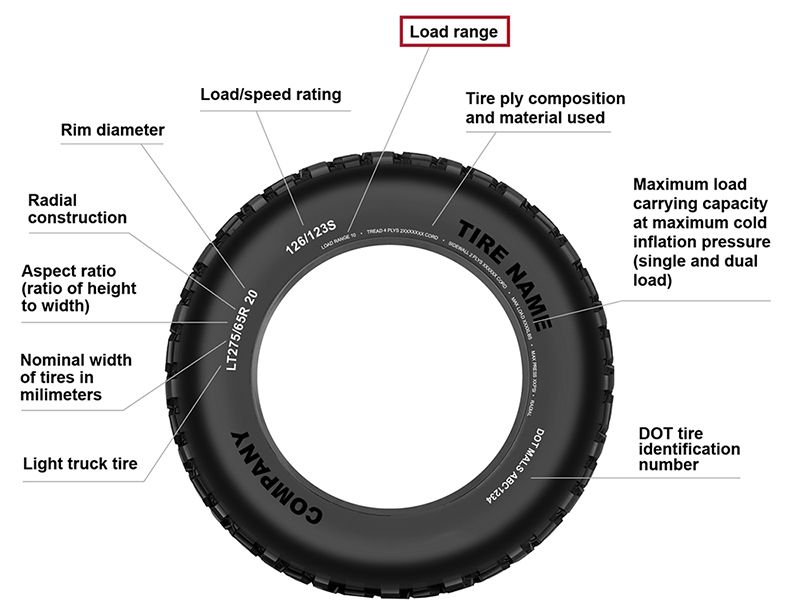
Another group of stamping on certain types of tires is the Uniform Tire Quality Grading or UTQG. This grading and stamping is required for passenger car tires (i.e. P-metric and Euro-metric) in the all season and summer categories. Dedicated winter tires, Light Truck (LT-Metric, Euro-Metric Commercial, Flotation) and Motorcycle tires are excluded from this requirement.
Quality grading is designed to make the tire purchase decision easier for you. Ideally, the system is intended to provide simple, comparative data so you can make an intelligent buying decision. However, the ratings are based upon test results achieved under special conditions. This means it’s possible to misinterpret the comparative data as it relates to your individual driving habits, conditions, etc. You should still rely on your service or tire professional for assistance.
Quality grading designates the comparative performance levels of a tire based on government-specified tests but commissioned by the individual tire manufacturers. All tire manufacturers are required to grade regular and all-season passenger tires in three categories:
All tire manufacturers are required to grade regular and all-season passenger tires in three categories:
UTQG
Treadwear
The treadwear grade is a comparative rating based on the wear rate of the tire when tested under controlled conditions on a specified government test course for 6,000 miles (9,600 km). For example, a tire graded 150 would wear one and a half times as well on the government course as a tire graded 100. However actual tire performance depends on driving habits, road characteristics, service practices, and other factors that can influence the outcome.
Traction Grades AA, A, B and C
The traction grades from highest to lowest are AA (the highest), A, B and C. They represent how well tires stop on wet pavement as measured under controlled conditions on specified government test surfaces of asphalt and concrete. C-rated tires will have the lowest traction performance.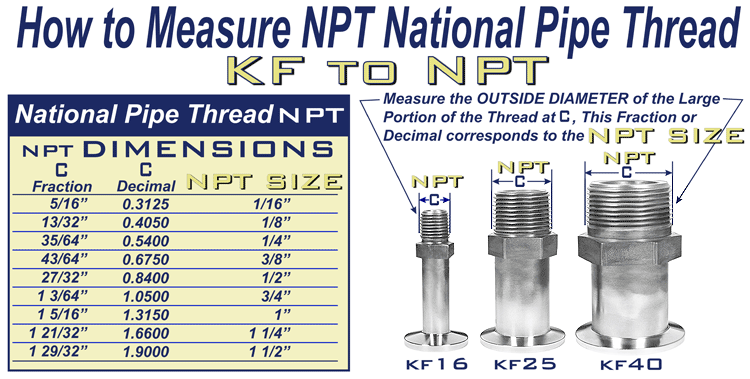
WARNING: THE TRACTION GRADE ASSIGNED IS BASED ON A WET BRAKING (STRAIGHT AHEAD) TRACTION TEST AND DOES NOT INCLUDE CORNERING (TURNING) TRACTION.
Temperature Grades A, B and C
The temperature grades A, B, and C represent the tire's resistance to the generation of heat and its ability to dissipate heat when tested under controlled conditions on a specified indoor laboratory test wheel. Sustained high temperature can cause the tire’s material to degenerate and reduce tire life, and excessive temperature can lead to sudden tire failure. The grade C corresponds to a performance level all passenger car tires must meet under the Federal Motor Vehicle Safety Standard No. 109. Grades A and B represent higher levels of performance on the laboratory test wheel than the minimum required by law.
WARNING: THE TEMPERATURE GRADE IS ESTABLISHED FOR A TIRE THAT IS PROPERLY INFLATED AND NOT OVERLOADED. EXCESSIVE SPEED, UNDER INFLATION, OR EXCESSIVE LOADING, EITHER SEPARATELY OR IN COMBINATION, CAN CAUSE HEAT BUILDUP AND POSSIBLE TIRE FAILURE.
DOT Quality Grades
All passenger car tires must conform to other federal requirements in addition to these grades.
Learn about our mission, our achievements, and our ongoing commitments
Read Our Origin Story
Created by Steven Wooding
Reviewed by Dominik Czernia, PhD and Jack Bowater
Last updated: Nov 05, 2022
Table of contents:Using our tire size calculator, you can find the tire measurements of your car tire, such as its diameter, sidewall height, and circumference. It's also a tire size comparison calculator, allowing you to compare your current tire with the one you are thinking of buying. It tells you whether the new tire will be a good fit, and how it might affect your speed dial.
The text below also explains:
So let the tremendous tire comparison begin!
You've probably seen this strange set of numbers and letters on your car's tires and wondered what they mean. It's called a tire code, and it specifies the size and type of tire. Getting properly sized parts for your vehicle is crucial, so make sure to visit the wheel offset calculator to get that right, too.
Let's go through each part of the code and make you a tire code expert.
The first letter is optional, so you might not always see it. It gives information about the intended use or the class of vehicle the tire fits. Possible values are:
Possible values are:
Up next is a 3-digit number that indicates the width of the tire in millimeters, measured at the widest point of the sidewall (technically called the "nominal section width"). Expect the width of the tire actually in contact with the road to be smaller than this value.
Next is a forward-slash for character separation, then there's a 2- or 3-digit number representing the profile of the tire. This number is the ratio of sidewall height to the tire's width as a percentage (also called the aspect ratio). So, for example, if the value was 50%, the sidewall height would be half of the width. If it is not present, you can assume a profile ratio of 82%. If the number is more than 200, then it represents the tire's diameter in millimeters.
If it is not present, you can assume a profile ratio of 82%. If the number is more than 200, then it represents the tire's diameter in millimeters.
Following the profile ratio, you may see an optional letter indicating the type of tire construction. Radial (R) is now the most common and the standard design for car tires today, with over a 98% market share. Here is a summary of radial and some other constructions you may see:
The wheel diameter is indicated by the final 1- or 2- digit number, in inches.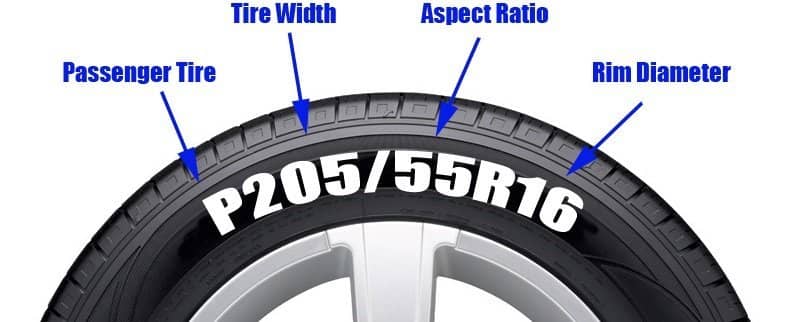 You might also see the wheel (or rim) diameter given to an accuracy of half an inch. In some rare cases, the number is three digits long. In that case, it represents the wheel diameter in millimeters.
You might also see the wheel (or rim) diameter given to an accuracy of half an inch. In some rare cases, the number is three digits long. In that case, it represents the wheel diameter in millimeters.
So that's the tire code and tire size explained.
If you found this calculator useful our fuel cost calculator may also be of interest to you.
Let's learn how to find tire sizes. We've got the tire code and the data required for us to calculate various tire measurements, such as the tire diameter and sidewall height.
To calculate the sidewall height, we multiply the profile ratio by the tire width (dividing by 100 as the ratio is a percentage). The formula is, therefore:
sidewall height = profile ratio × width / 100So, for the tire code shown in the figure above, P215/65R15, you would calculate the sidewall height as:
sidewall height = 65 × 215 / 100 = 139. 75 mm
75 mmConverting to inches (divide by 2.54 × 10), that's 5.5 inches. We know the diameter of the wheel is 15 inches, so the diameter of the tire is given by:
tire diameter = wheel diameter + (2 × sidewall height)So, for our example, that's:
tire diameter = 15 + (2 × 5.5) = 26 inchesTo calculate the circumference, we use the classic circle equation:
circumference = π × diameterSo, for our exemplary tire, the tire circumference is:
circumference = 3.1416 × 26 = 81.7 inchesOur tire size calculator can also tell you how many revolutions a tire completes in a mile (or kilometer). This value is found by converting a mile into inches and dividing the result by the tire's circumference:
revolutions number = 63360 / 81.7 = 775Using our tire size calculator is easy:
 You may also specify the construction type of the tire, though it will not affect any tire's size dimensions.
You may also specify the construction type of the tire, though it will not affect any tire's size dimensions.Want to compare one tire with another one? Then select "Yes" when asked, "Compare with another tire?". The same inputs and outputs will appear for the second tire.
At the end of the tire size conversion calculator, you will see the absolute difference in the diameters of the two tires and the corresponding percentage change. Note that if you are looking to put this second tire on your vehicle, the difference in tire diameter should be no more than 2. 5% smaller or larger. If it is larger, the tire might foul the wheel arch of your car, or the tire may be too weighty for the car's suspension and shock absorbers. Too small a tire size may mean the vehicle's ground clearance is not practical (scrapping speed bumps) anymore.
5% smaller or larger. If it is larger, the tire might foul the wheel arch of your car, or the tire may be too weighty for the car's suspension and shock absorbers. Too small a tire size may mean the vehicle's ground clearance is not practical (scrapping speed bumps) anymore.
Changing the tire diameter will also affect the speedometer reading when compared to the actual speed of the car. Fortunately, this is also a tire size speedometer calculator too! Enter a speed into the "Speedometer reading" row, and you see the actual speed displayed. This information could be important when keeping to speed limits. If it is a modern vehicle, you might be able to set the tire diameter size in the car's electronics system. Your garage should be able to help you out, depending on the make and model of your vehicle.
✅ Now that you know your tire size, you can use it in the speedometer gear calculator to find the right gear for your vehicle, too!
Let's take a more in-depth look at the tire comparison feature by comparing two tires with the tire codes 195/65R15 and 195/85R15. If you enter these values into the tire size calculator, we can check them out in more detail.
If you enter these values into the tire size calculator, we can check them out in more detail.
The diameter calculated for the first tire is 25 inches, and the second one is just over 28 inches in diameter. That's a difference of over 3 inches. You'll see that's a 12.3% difference - well over the recommended amount. The percentage change is calculated like this:
percentage change = 100 × absolute difference / first tire diameterSo, for this example, inputting the values gives:
percentage change = 100 × 3.07 / 25 = 12.3 %This percentage change in tire diameter is also the difference between the speedometer reading and the actual speed of the car. For example, if the speedometer says 30 mph, the actual speed will be:
actual speed = 30 × (1 + (12.3 / 100)) = 33.69 mphSteven Wooding
Profile ratio
Wheel diameter
Tire construction
Tire diameter
Sidewall height
Circumference
Revolutions
Tire comparison
Compare with another tire?
Check out 23 similar transportation calculators 🚘
0-60Boat speedBrake specific fuel consumption… 20 more
Nikolaev bicycle shop "Sportek"
Published: 04/07/2017
Edited: 07/15/2018
From time to time the question arises: “What is the diameter of the bicycle wheels?”
Most often, it pops up if a tire has broken through or new tires are needed for the wheel of an old bicycle. And to the seller’s question “What wheel does your bike have?” Only one answer comes to mind: “round”.
First of all, you need to define the concept of wheel diameter .
For most ordinary people, this is the diameter of the wheel at the outer (outer) border of the tire.
But there is also the concept of rim fit size - this is the diameter of the rim or tire itself along the inner border.
Therefore, it would be a good idea to first understand the tire labeling systems adopted in the world in order to speak the same language with the seller of the bike shop. You can read about this in the article "Bicycle tires: sizes, marking types and interchangeability" on our website.
For the sake of brevity, here is a figure explaining what is measured in each labeling system. Therefore, it is important to understand what we measure and what we want to find.
When choosing a new rubber, be guided by it. If there is no tire with exactly the same marking, look at the interchangeability table and select the right size in another marking.
If a new tire is needed a little wider or narrower, check the tire and rim width chart.
If in doubt, talk to the salesperson. He will tell you if it is right for you, both in terms of size, tread, riding style and what kind of roads you want to ride.
This can be done by measuring the radius and multiplying it by two.
For younger students reading this article, I remind you that one diameter consists of two radii.
Only you need to measure strictly from the center of the sleeve, and not from its edges. When measuring, the bike should stand vertically, and the tape measure, putting one end to the ground, keep the same strictly vertically, and not along the spokes of the wheel . Only such a measurement will give the correct value.
The wheel diameter itself can be measured in the same way. The main thing is to accurately determine its upper cut. To do this, you can take a level and attach it to the top of the tire, and, holding it strictly horizontally, determine the desired size from the tape measure.
After that, we convert it from mm to inches. To do this, divide it by 25.4 (1 inch = 25.4 mm) and calculate the size in inches. The result can be rounded up to standard inch wheel sizes.
For example, if the measurement is 720 mm, divide by 25.4 to get 28.346 inches. So, most likely, the actual size of the wheel, taking into account the accuracy of the calculations, is 28”.
In principle, the rim diameter can also be measured in the same way.
Just pay attention to the difference between what is measured on the outside of the tape measure and the fit size of the rim.
And knowing it, it is easy to calculate the diameter. To do this, the circumference in millimeters must be divided by the number "Pi" (3.14). Once you get the diameter in mm, divide it by 25.4 to get the diameter in inches. Similarly to the previous paragraph, the result will have to be rounded to the nearest whole number in inches. The more accurate all measurements, the more accurate the result and the less rounding.
Comments (2)
x
Author: Sochi Auto Remont
Heading: Tips for a car enthusiast
First of all, we find the exact size of the wheel diameter, and then we go to buy the appropriate tires. How correctly you do this, how correctly and steadily your car will behave on the road. The diameter of the wheel is a composite value, which is why care is required in the calculations. How to determine the diameter of the wheel is our topic today.
Determining the diameter and choosing the right tires!
Step-by-step instructions on how to determine the diameter of a wheel
How to determine the diameter of a wheel
Step 1. The simplest formula is used for calculations: it is necessary to add the sum of two tire profile heights to the disk diameter. This method is applicable only when calculating for passenger cars.
Step 2. Take a tape measure for the usual way of measuring the diameter of the wheel. Each parameter taken from the formula must be measured separately. The values that you get must be converted to inches (since the unit of measurement for the diameter of a car wheel is an inch). We translate into inches as follows: divide each number obtained by 2.54. Then you need to add together the values obtained as a result of the measurement. The resulting number is the diameter of your wheel.
Step 3. You don't have to do mathematical calculations, just apply an even simpler calculation formula. How to determine the diameter of the wheel using the second formula - you need to take the number that indicates the width of the rim, and add 20% to it, so you get the full width of your wheel. If the tire width is narrow, then the difference between the total width of the wheels and the width of the rim will be 15%.
Step 4. Experts do not recommend making the wheel diameter larger than the allowable limits. The permissible norm is to increase the diameter of the wheel by a maximum of several centimeters. A wheel size that exceeds the allowable values will have a bad effect on the chassis of the car, as well as touch the wheel arches. It will be necessary to change the alignment of the car, which will then affect fuel consumption.
Step 5. When maximizing the diameter of the rim, choose an appropriately low profile tire compared to the standard tyre. Do not forget that low-profile tires do not have the same margin of safety as a standard tire. It is necessary to maintain a balance between the overall diameter of the wheel and disk. Plus, low-profile tires, along with the maximum diameter of the disk, deprives you of the usual comfort, and also affects the chassis.
Step 6. Wheel rim diameter is an important part of a car wheel. You need to know and remember that wheel parameters in terms of rim diameter can range from 10 to 23 inches. The parameters of small indicators refer to motorcycles and mopeds. Large indicators are used among powerful vehicles.
Useful tips for car owners.
If you have doubts about your calculations, you can always turn to specialists. How to determine the diameter of the wheel - experienced specialists at a glance can give you accurate information on your wheels.